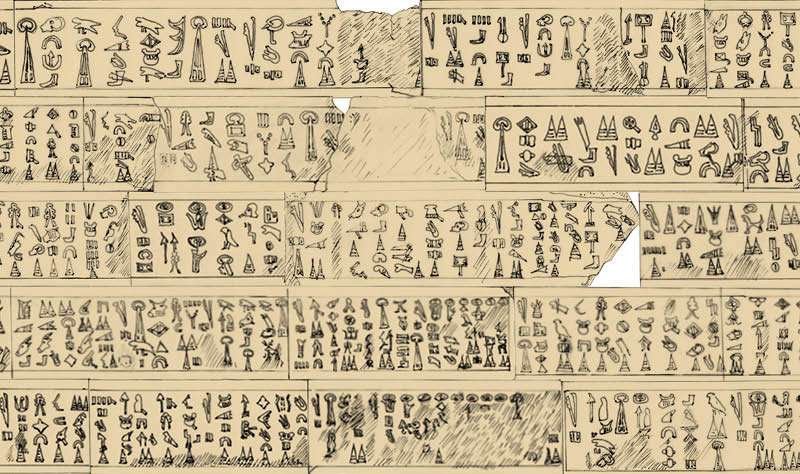Invasion Of Mysterious Sea People – Enigmatic 3,200-Year-Old Luwian Hieroglyphic Inscription Sheds New Light On Ancient Puzzle
AncientPages.com - In 1878, archaeologists discovered a stone slab covered with ancient symbols in modern Turkey. The 29-meter-long bears the longest known hieroglyphic inscription from the Bronze Age. It is a Luwian hieroglyphic inscription and only a handful of scholars have been able to decipher it.
This enigmatic stone describes the events at the end of the Bronze Age in the Eastern Mediterranean and sheds new light on one of the greatest puzzles of Mediterranean archaeology.
Although many theories have been presented there is little solid information about the mysterious Sea People.
Their nationality remains a mystery as the only records we have of their activities are mainly Egyptian sources who only describe them in terms of battle (such as the record from the Stele at Tanis which reads, in part, “They came from the sea in their war ships and none could stand against them”).
Luwian Hieroglyphic inscription by the Great King of Mira, Kupanta-Kurunta, composed at about 1180 BC. Credit: Luwian Studies
The term ‘Sea Peoples’ refer to nine groups of people, but the historical inscriptions give indications only to three of them, namely, the Sherden, Shekelesh, and Eqwesh.
The first translation of the Luwian hieroglyphic inscription has offered an explanation for the collapse of the Bronze Age's powerful and advanced civilizations.
The inscription and a summary of its contents also appear in a book by Eberhard Zangger that is being published in Germany today: Die Luwier und der Trojanische Krieg – Eine Forschungsgeschichte.
See also:
Life Of Galilean Sages Described On 1,800-Year-Old Hebrew Inscriptions Can Confirm Ancient Legends
The script tells how a united fleet of kingdoms from western Asia Minor raided coastal cities on the eastern Mediterranean.
It suggests they were part of a marauding seafaring confederation, which historians believe played a part in the collapse of those nascent Bronze Age civilizations.
Researchers believe the inscriptions were commissioned in 1190 BC by Kupanta-Kurunta, the king of a late Bronze Age state known as Mira.
The text suggests the kingdom and other Anatolian states invaded ancient Egypt and other regions of the east Mediterranean before and during the fall of the Bronze Age. When Kupanta-Kurunta had reinforced his realm, just before 1190 BC, he ordered his armies to storm toward the east against the vassal states of the Hittites.
After successful conquests on land, the united forces of western Asia Minor also formed a fleet and invaded a number of coastal cities (whose names are given) in the south and southeast of Asia Minor, as well as in Syria and Palestine. Four great princes commanded the naval forces, among them Muksus from the Troad, the region of ancient Troy. The Luwians from western Asia Minor advanced all the way to the borders of Egypt, and even built a fortress at Ashkelon in southern Palestine.
According to this inscription, the Luwians from western Asia Minor contributed decisively to the so-called Sea Peoples' invasions – and thus to the end of the Bronze Age in the eastern Mediterranean.
Copyright © AncientPages.com All rights reserved. This material may not be published, broadcast, rewritten or redistributed in whole or part without the express written permission of AncientPages.com
More From Ancient Pages
-
 Ancient Scandinavians Never Spoke Of Themselves As Vikings – Here Is Why
Ancient History Facts | Mar 15, 2021
Ancient Scandinavians Never Spoke Of Themselves As Vikings – Here Is Why
Ancient History Facts | Mar 15, 2021 -
 Rose Cross – Powerful Symbol That Existed Long Before Christianity
Ancient Symbols | Dec 3, 2017
Rose Cross – Powerful Symbol That Existed Long Before Christianity
Ancient Symbols | Dec 3, 2017 -
 Yungang Grottoes: Marvellous Example Of Ancient Buddhist Rock-Cut Architecture
Civilizations | Sep 10, 2015
Yungang Grottoes: Marvellous Example Of Ancient Buddhist Rock-Cut Architecture
Civilizations | Sep 10, 2015 -
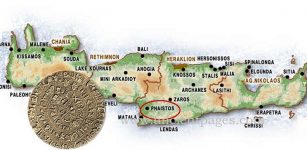 Is The Mystery Of Controversial Phaistos Disk Solved?
Archaeology | Dec 17, 2015
Is The Mystery Of Controversial Phaistos Disk Solved?
Archaeology | Dec 17, 2015 -
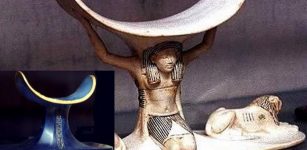 Why Did Ancient Egyptians Use Pillows Made Of Stone?
Ancient History Facts | Jun 18, 2018
Why Did Ancient Egyptians Use Pillows Made Of Stone?
Ancient History Facts | Jun 18, 2018 -
 Ancient DNA Provides Comprehensive Genomic History Of The “Cradle Of Civilization”
Archaeology | Oct 10, 2022
Ancient DNA Provides Comprehensive Genomic History Of The “Cradle Of Civilization”
Archaeology | Oct 10, 2022 -
 4,000-Year-Old Village Mentioned In Ancient Texts Unearthed Near Sacred City Of Varanasi
Archaeology | Mar 13, 2020
4,000-Year-Old Village Mentioned In Ancient Texts Unearthed Near Sacred City Of Varanasi
Archaeology | Mar 13, 2020 -
 Humans Were Living Around Fort McMurray, Alberta 13,000 Years Ago – Scientists Reveal
Archaeology | Aug 3, 2022
Humans Were Living Around Fort McMurray, Alberta 13,000 Years Ago – Scientists Reveal
Archaeology | Aug 3, 2022 -
 ‘Throughout All Days And Nights, Forever’: Could An 11th-Century Contract Show Same-Sex Marriage In Medieval Spain?
Featured Stories | Aug 23, 2024
‘Throughout All Days And Nights, Forever’: Could An 11th-Century Contract Show Same-Sex Marriage In Medieval Spain?
Featured Stories | Aug 23, 2024 -
 Why Are There No Unicorn Fossils In A Museum?
Archaeology | Mar 17, 2023
Why Are There No Unicorn Fossils In A Museum?
Archaeology | Mar 17, 2023 -
 Visit The Palace Where Alexander The Great Was Born In Pella
Archaeology | Oct 21, 2020
Visit The Palace Where Alexander The Great Was Born In Pella
Archaeology | Oct 21, 2020 -
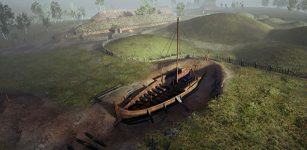 Archaeologists Reveal 12 Exciting Finds From The Gjellestad Viking Ship Dig
Archaeology | May 28, 2022
Archaeologists Reveal 12 Exciting Finds From The Gjellestad Viking Ship Dig
Archaeology | May 28, 2022 -
 Secrets Of Mysterious Bronze Age Hoard Found In Rosemarkie, Scotland Revealed
Archaeology | Jul 31, 2024
Secrets Of Mysterious Bronze Age Hoard Found In Rosemarkie, Scotland Revealed
Archaeology | Jul 31, 2024 -
 On This Day In History: Magna Carta Sealed By King John Of England – On June 15, 1215
News | Jun 15, 2016
On This Day In History: Magna Carta Sealed By King John Of England – On June 15, 1215
News | Jun 15, 2016 -
 Queen Elizabeth I Was Identified As Author Of Tacitus’s Annales Translation
News | Dec 1, 2019
Queen Elizabeth I Was Identified As Author Of Tacitus’s Annales Translation
News | Dec 1, 2019 -
 Puzzle Of The Bull Rock Cave – Ancient Mass Grave Remains Unexplained
Featured Stories | Mar 12, 2018
Puzzle Of The Bull Rock Cave – Ancient Mass Grave Remains Unexplained
Featured Stories | Mar 12, 2018 -
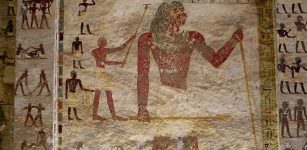 Rock-Cut Tombs Of Beni Hasan With Spells, Prayers To Osiris And Anubis And Map To Underworld
Civilizations | Feb 3, 2017
Rock-Cut Tombs Of Beni Hasan With Spells, Prayers To Osiris And Anubis And Map To Underworld
Civilizations | Feb 3, 2017 -
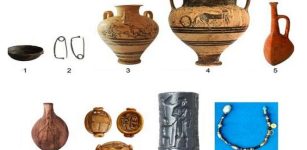 Cyprus’s Copper Deposits Created One Of The Most Important Trade Hubs Of The Bronze Age
Archaeology | Mar 17, 2023
Cyprus’s Copper Deposits Created One Of The Most Important Trade Hubs Of The Bronze Age
Archaeology | Mar 17, 2023 -
 Unraveling the mystery of the Rhynie Man
News | Aug 24, 2015
Unraveling the mystery of the Rhynie Man
News | Aug 24, 2015 -
 Incredible Cave With Secret ‘Door’ Discovered In The American West – Fascinating Underground Mystery
Featured Stories | Nov 19, 2024
Incredible Cave With Secret ‘Door’ Discovered In The American West – Fascinating Underground Mystery
Featured Stories | Nov 19, 2024

